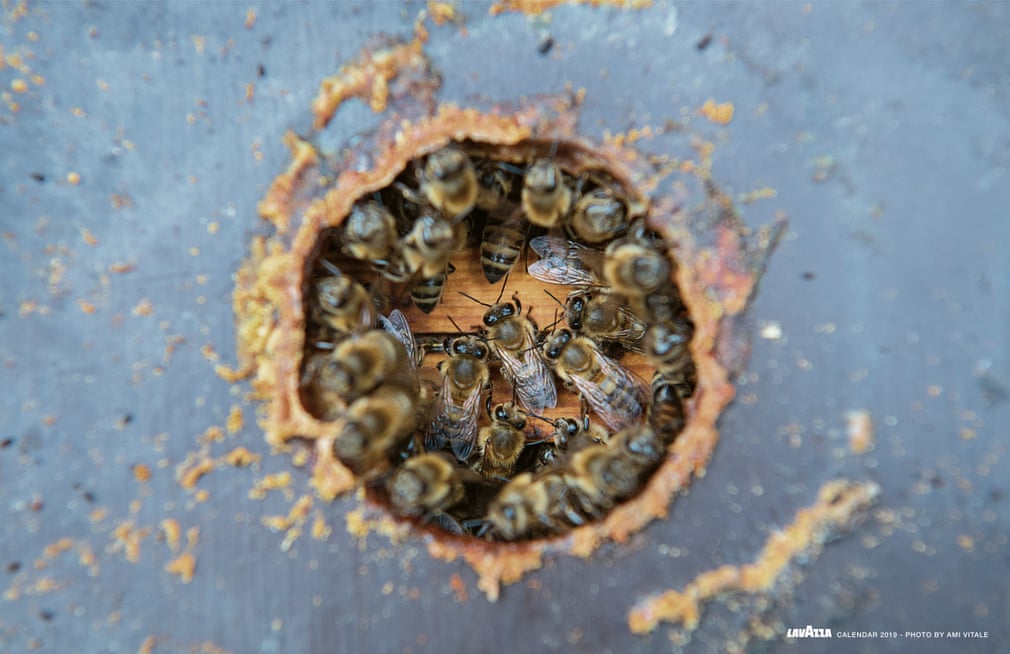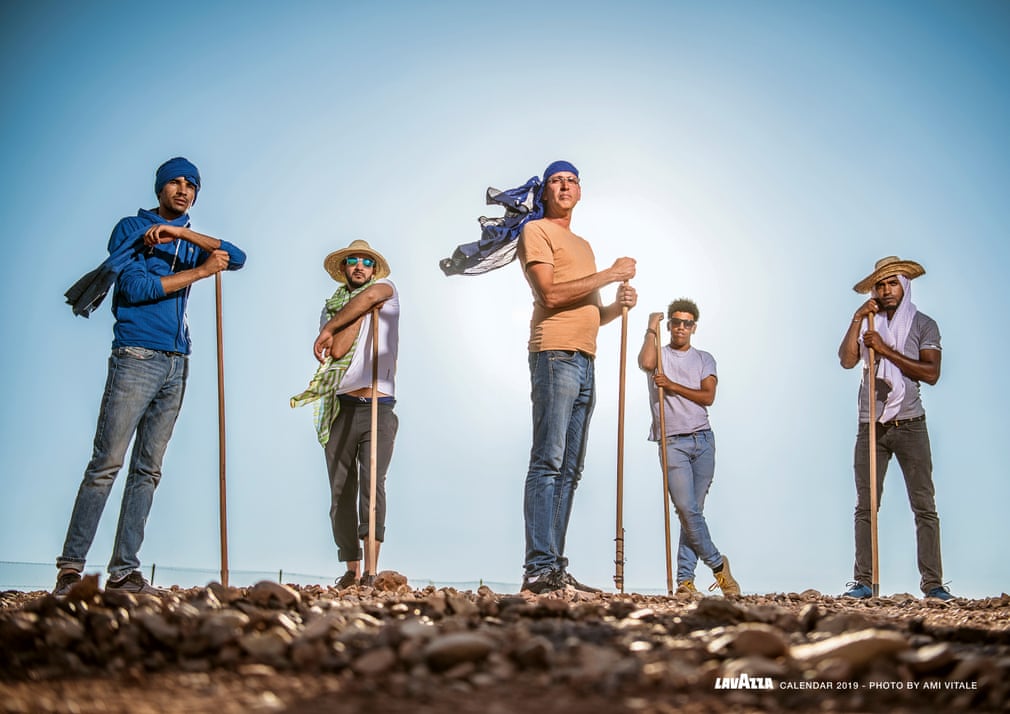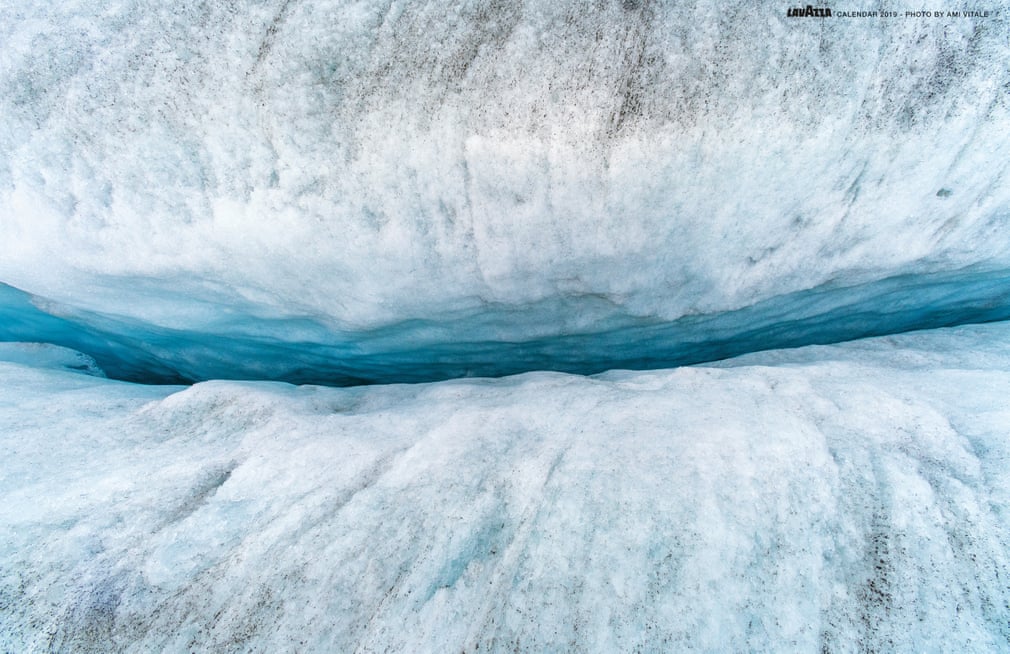Good to Earth: the Lavazza 2019 calendar
Photographer Ami Vitale’s images of six nature art installations around the world aim to spread good news about efforts to protect the environment. The project was carried out in partnership with the United Nations Environment Programme
Take Care for Future, by Saype, in Huila, Colombia
The work covers an area of 8,000 square metres and portrays a local inhabitant, Maria Paula. It is meant to symbolise the need for new generations to take care of the land and the planet
After years of armed conflicts and the spread of illegal farming in Colombia, the fields are lush again with the help of a project promoted by the Giuseppe and Pericle Lavazza Foundation. The aim is to offer support for the development of sustainable farms by training local communities to use new farming techniques and by providing internet access
The work was created using water and 100% biodegradable materials. Saype said: ‘What is interesting when I paint on grass is how quickly the ecosystem regains life. Flowers start blooming again, butterflies fly just above the grass, thousands of ants start moving around. It’s really incredible how nature takes over my artwork’
Mvuvi wa mikoko, by Mantra, in Gazi Bay, Kenya
The painting, measuring five metres by three, was painted in three days and then installed on a raft secured to the mangroves
The Mikoko Pamoja organisation plants 4,000 new mangroves in Gazi each year to protect coastal communities from floods and tsunamis and to act as a natural carbon sink. Now that Gazi’s forests have begun to grow thicker again, many aquatic animals have found a perfect habitat
‘Art comes after nature because humans have developed a powerful capacity to observe the world around them and reproduce it. I believe it is nature that has given an essence to art’ – Mantra
Rebirth, by Millo, in Genk, Belgium
The mural was surrounded by six bees to celebrate the insect that symbolises the rebirth of Genk
The mural was created in five days using water-based wall paint. ‘When I draw a grey city, I feel that I have to add colour as a complement. The message thus becomes to think of spaces in a more sustainable way, as in Genk’ – Millo
A former industrial and coalmining area, today Genk is in a new cycle of sustainable development and has welcomed the return of bees. The redevelopment of the abandoned industrial area has created 69 new gardens where people can meet and grow organic food, and the efforts of local residents have created the ideal conditions for bees to thrive
Perpetual Flow, by Gerada, in Ouarzazate, Morocco
The image is meant to symbolise the ability to reuse water to create a greenbelt around the city and so protect it from sandstorms
The inhabitants of Ouarzazate, a city known as ‘the door to the desert’, have protected it against sandstorms by creating a greenbelt around the city using innovative irrigation systems. Waste water is recycled, collected, filtered in reservoirs and then pumped into the greenbelt with the aid of clean power generated by the biggest power plant in north Africa
Perpetual Flow extends over 37,500 sq metres and was created using rakes, stones found on the site, 36 tonnes of dark gravel, and vegetable oil
Dendrochronology, by Gomez, in Petchaburi, Thailand
The work is made up of six oil-painted plexiglass sheets up to 120cm high
The Wildlife Friends Foundation of Thailand and other organisations have regenerated degraded forest land, creating a perfect habitat for gibbons, above all, but also elephants and numerous other species
‘The portrait of a proud woman becomes at one with the trees and foliage because of the transparency of the plexiglass,’ according to the artwork’s description
Encompass I, by Hula, on the Rhône glacier in Switzerland
The work was created using non-toxic, 100% biodegradable materials and portrays two children sheltering under a blanket, symbolising the future generations who face challenges such as climate change and melting glaciers
The Rhône glacier is an expanse of ice and snow 10km in length and 1km in width. During the ice age it covered all of Switzerland. Today it shrinks by approximately nine metres in length and depth each year. People from this area have decided to try to protect the glacier using white geotextile blankets that reflect the sun’s rays
‘These mountains instil a sense of respect at first glance. Yet, when we reflect that the glacier has shrunk considerably in just a few years, it is easy to see how much it needs to be protected. We are at a crucial juncture for action’ – Hula












